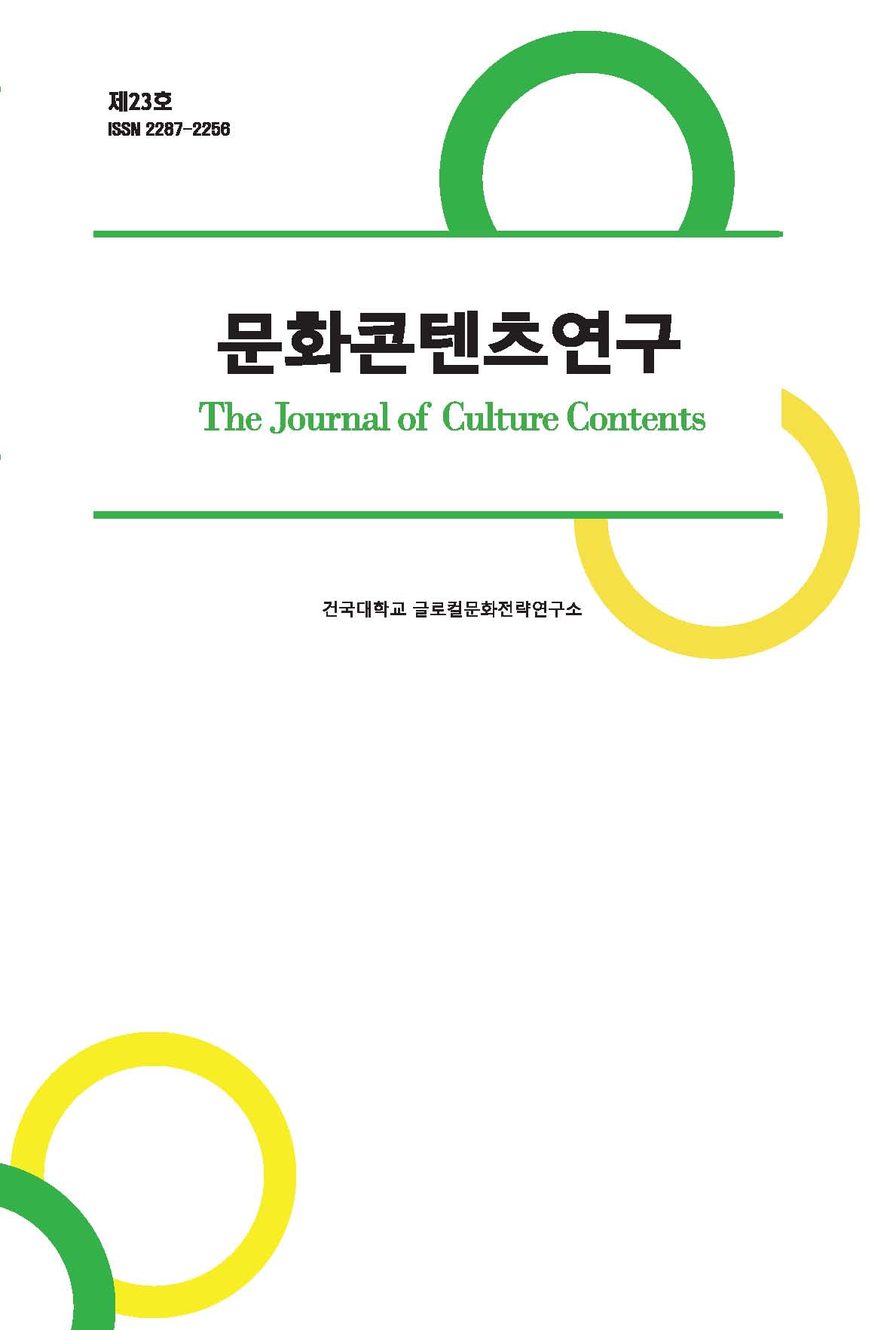Abstract
References
Information
This study explores perspectives towards bar visiting of young South Korean Millennial women. By employing in-depth interviews including 2 bartenders and 9 millennial women customers, the findings highlight the Millennial women’s bar consumption behavior: First, the bar space is distinguished from other restaurant spaces due to the nature of its composition and interactions, reflecting that the millennials actively use social media and mobile devices as digital natives to explore new spaces, and the rules already formed in the bar, resulting in the bars’ spatiality, where exchanges between strangers often occur. Second, millennial women show tendencies of ‘self-directed symbolic consumption’. They are independent consumers with sophisticated taste and purchasing power and try to form their own image by borrowing the image of space by sharing the experience with social media or acquaintances in the networks. Third, millennial women reveal ambivalent desire for loose social interactions while enjoying the private space and spending time on their own at the bar. The bar reveals the desire and new consumption attitude of millennial women who have financial means to consume what they want and spend their free time, where allows women to temporarily forget the anxiety felt by women, and relieves daily tension felt in society. As Millennial women’s educational level and social achievements increase, their socio-economic status will improve in the next generation.
최근 바(bar)를 방문하는 소비자가 지속적으로 증가하고 있으며, 특히 30대 이하의 방문이 두드러진다. 본 연구에서는 바 공간의 주요 이용객인 밀레니얼 여성의 바 소비 특성과 소비 방식을 통한 생활양식의 변화를 파악하고자 한다. 바 공간은 구성과 공간 내 상호작용의 특성이 다른 식음 공간과는 확연하게 구분된다. 외관보다 내부의 콘텐츠나 경험적 요소를 통해 손님을 유인하는 바는 디지털 네이티브로서 소셜미디어와 모바일 기기를 적극적으로 활용하여 새로운 공간을 탐색하는 밀레니얼 세대의 새로운 공간 소비 방식을 반영한다. 바에서는 바테이블과 바텐더의 존재, 술과 조명이 주는 분위기, 미디어에서 보여주는 이미지와 공간에 형성된 규칙 등에 의해 낯선 사람 간의 교류가 흔히 발생한다. 밀레니얼 여성은 바 공간을 소비하며 자기 지향적 기호 소비의 경향을 보인다. 경제적 결정권을 가진 독자적인 소비 주체가 된 여성은 필요에 의한 소비뿐 아니라 자신의 욕망을 반영한 소비를 한다. 바를 통해 세련된 취향, 구매력이 있는 독립적 소비 주체로서 이미지를 획득하고, 공간 소비 경험을 소셜미디어나 주변 지인에게 공유함으로써 자신의 이미지를 형성한다. 밀레니얼 여성은 바 공간 소비 과정에서 양가적 소비 욕구를 드러낸다. 즉, 바 공간 소비를 통해 얻을 수 있는 효용에 호감을 느껴 이를 일상적으로 소비하고자 하나, 동시에 바 소비가 일상에 포섭되어 특유의 비일상성을 상실하는 것을 경계한다. 나아가 소비를 통해 부족한 사적 공간을 대체하고 자신만의 시간을 보내고자 하기도 하나, 동시에 사회적 교류를 원하는 양가적 욕망을 보인다. 밀레니얼 여성은 서로를 긴밀하게 묶어두는 전통적 관계를 거부하는 대신 상황에 따라 관계를 조절할 수 있는 보다 느슨한 연대를 추구하며 가부장제에서 소모해 온 자원을 가정이 아닌 자신에게 쏟고자 한다. 바는 변화된 지위에 따라 밀레니얼 여성이 표출할 수 있게 된 욕망과 소비 태도를 집약적으로 드러내는 공간이다. 스스로를 경제적으로 책임지게 된 여성이 느끼는 불안감을 구매력의 재확인을 통해 잠시 잊게 해주는 망각의 공간인 동시에, 사회에서 느끼는 일상의 긴장을 해소하는 비일상의 공간이며, 공간 내의 사람들과 교류하며 느슨한 연대의 가능성을 발견하는 공간이다.
- 「취향의 시대, 관계를 다시 묻다」 『르몽드 디플로마티크』, 2020년 04월 29일자.
- 김선일․류중호․이대수, 「바텐더의 역할이 고객만족 및 재방문의도에 미치는 영향」, 『호텔리조트연구』 제12권 (제3호), 호텔리조트학회, 2013.
- 김용섭, 『라이프트렌드 2014: 그녀의 작은 사치』, 부키, 2013.
- 김용섭, 『라이프트렌드 2020: 느슨한 연대』, 부키, 2019.
- 라선아․김지호․이준영․김소연, 「경험공간의 구조와 소비자의 공간소비에 관한 연구」, 『춘계학술대회논문집』 제2015권(제4호), 한국소비자학회, 2015.
- 레이 올든버그, (Celebrating the Third Place: Inspiring Stories About the “Great Good Places” at the Heart of Our Communities), 김보영, 『제3의 장소』, 풀빛, 2019.
- 양희윤․조혜정, 「시각적 접근과 노출 모델을 이용한 소비 공간 선호도에 대한 연구」, 『마케팅관리연구』 제20권(제4호), 한국마케팅관리학회, 2015.
- 에드워드 홀, (The Hidden Dimension), 최효선, 『숨겨진 차원』, 한길사, 2013.
- 원혜리, 「공간 스토리텔링이 적용된 바(Bar)의 공간 표현 특성 연구」, 한양대학교 석사논문, 2017.
- 이윤화․김성화, 「대한민국을 이끄는 외식 트렌드 2020」, 다이어리 R, 2020.
- 이지아, 「소셜미디어 영향정도에 따른 방문자 유형별 장소성 형성 및 행동의도 연구 -서울시 성수동을 대상으로-」, 한양대학교 박사 논문, 2021.
- 장 보드리야르, (The Consumer Society: Myths and Structures), 이상률 , 『소비의 사회』, 문예출판사, 1992.
- 조영태, 『인구 미래 공존』, 북스톤, 2021.
- 조윤설․조택연, 「밀레니얼 세대의 공간 소비에서 나타난 특징 분석」, 『한국디자인문화학회지』 제25권(제1호), 한국디자인문화학회, 2019. 10.18208/ksdc.2019.25.1.413
- 질 밸런타인, (Social Geographies: Space and Society), 박경환, 『공간에 비친 사회, 사회를 읽는 공간』, 한울아카데미, 2014.
- 통계청, 「2020 통계로 보는 여성의 삶」, 통계청, 2020.
- 하나금융경영연구소, 「밀레니얼 세대의 금융니즈 및 행태 조사」, 하나금융경영연구소, 2018.
- 행정안전부, 「우리나라 주민등록 연령별 인구」, 행정안전부, 2021.
- 황지희․조경은․최혜경, 「밀레니얼 세대의 자아존중감과 불안정 성인애착이 보상소비행동에 미치는 영향」, 『문화기술의 융합』 제7권(제1호), 국제문화기술진흥원, 2021.
- Bachman, J. Hull, J., and Haecker, S., “Millennials are not all the same: Examining millennial craft brewery and winery visitors' social involvement, self-image, and social return”,
International Journal of Tourism Research , 23(1), 2020.10.1002/jtr.2400 - Ball, R.,
Rough Spirits & High Society: The Culture of Drink , British Library Publishing, 2018. - Granovetter, M., “The strength of weak ties A network theory revisited”,
Sociological Theory , 1983.10.2307/202051 - OECD,
The Squeezed Middle Class , OECD, 2019. - Putnam, R.,
Bowling Alone , Simon & Schuster, 2001.10.1145/358916.361990 - Sandstrom, G. and Dunn, E., “Social interactions and well-Being: The surprising power of weak ties”,
Personality and Social Psychology Bulletin , 40(7), 2014.10.1177/0146167214529799 24769739 - Strauss, W. and Howe, N.,
Generations: The History of America's Future, 1584 to 2069 , New York, 1991. - WHO,
Global Status Report on Alcohol and Health , 2018. - World Bank,
Women, Business and the Law , 2022.
- Publisher :Research Institute of Creative Contents
- Publisher(Ko) :글로컬문화전략연구소
- Journal Title :The Journal of Culture Contents
- Journal Title(Ko) :문화콘텐츠연구
- Volume : 30
- Pages :7~31
- DOI :https://doi.org/10.34227/tjocc.2024..30.7



 The Journal of Culture Contents
The Journal of Culture Contents





